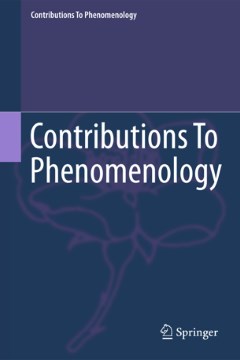Indirect mathematization in the physical sciences
pp. 71-92
Abstract
This paper reflects upon and extends Husserl's analysis of the indirect mathematization of nature by distinguishing three stages thereof: (1) Galileo's extension of classical Euclidean geometry to the study of matter in motion; (2) the development (dependent upon the analytic geometry and the calculus) of the ideal of a fully formal, axiomatic science of nature; and (3) the challenges posed to this view of science by relativity theory, quantum mechanics. The differing mathematical conceptions involved in these challenges also occasion a revised view of how the world presents itself in and to the scientific experience.
Publication details
Published in:
Hardy Lee, Embree Lester (1992) Phenomenology of natural science. Dordrecht, Springer.
Pages: 71-92
DOI: 10.1007/978-94-011-2622-9_4
Full citation:
Drummond John (1992) „Indirect mathematization in the physical sciences“, In: L. Hardy & L. Embree (eds.), Phenomenology of natural science, Dordrecht, Springer, 71–92.


